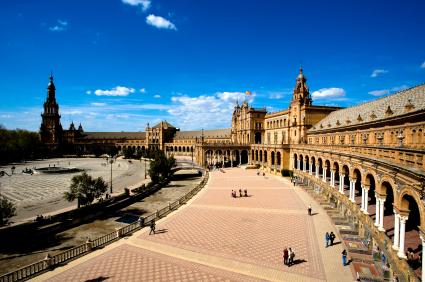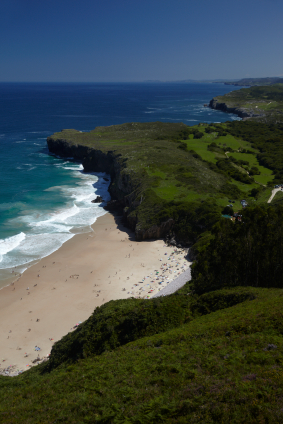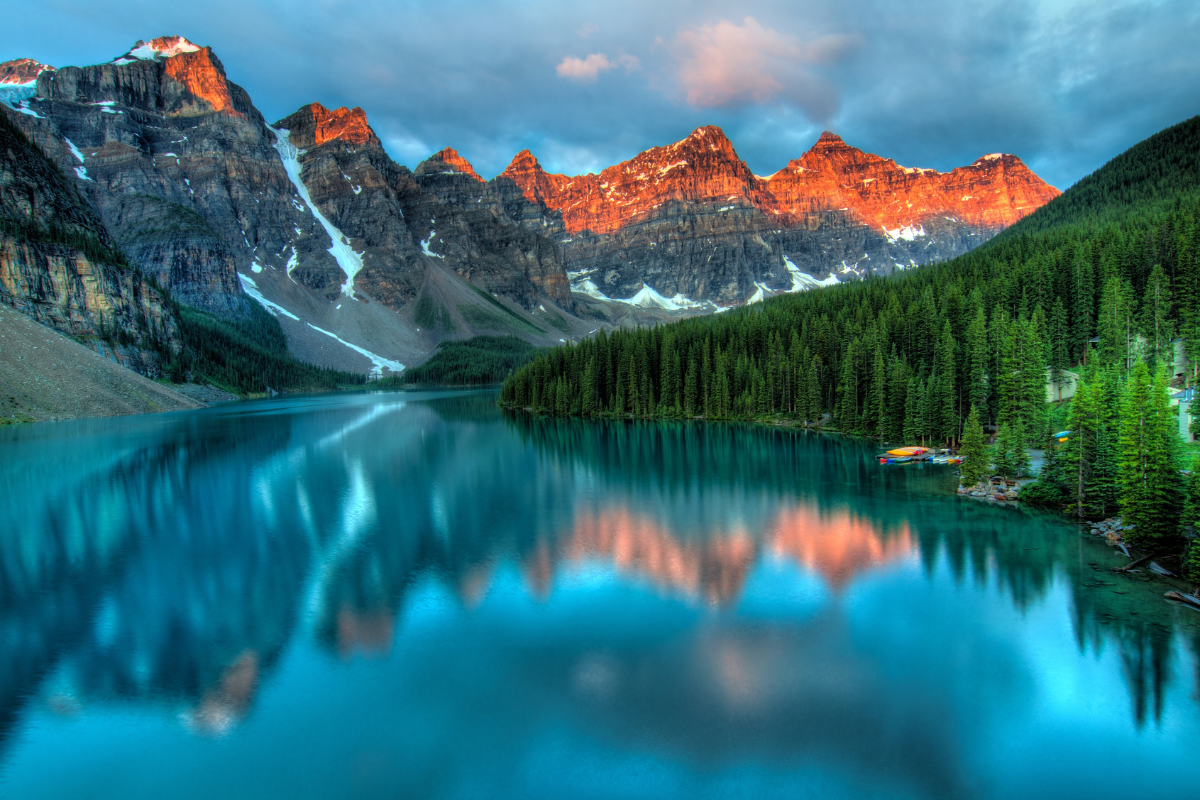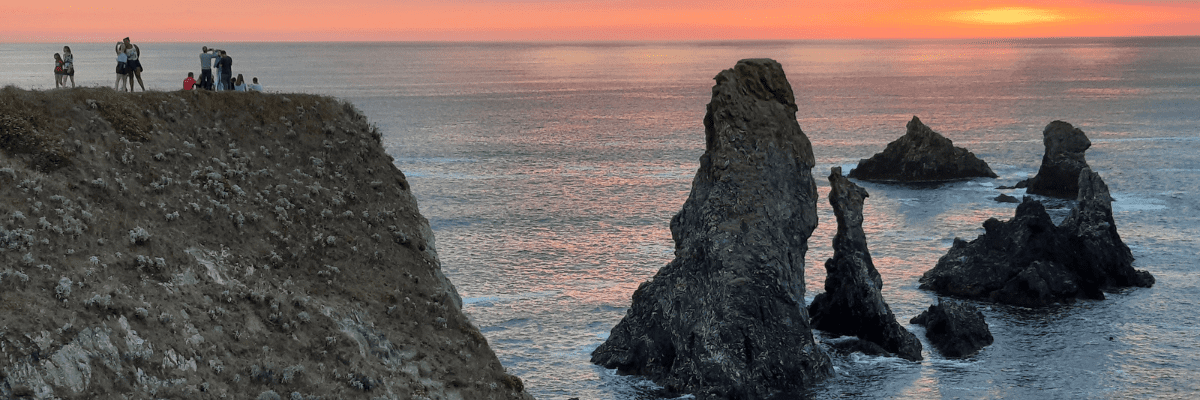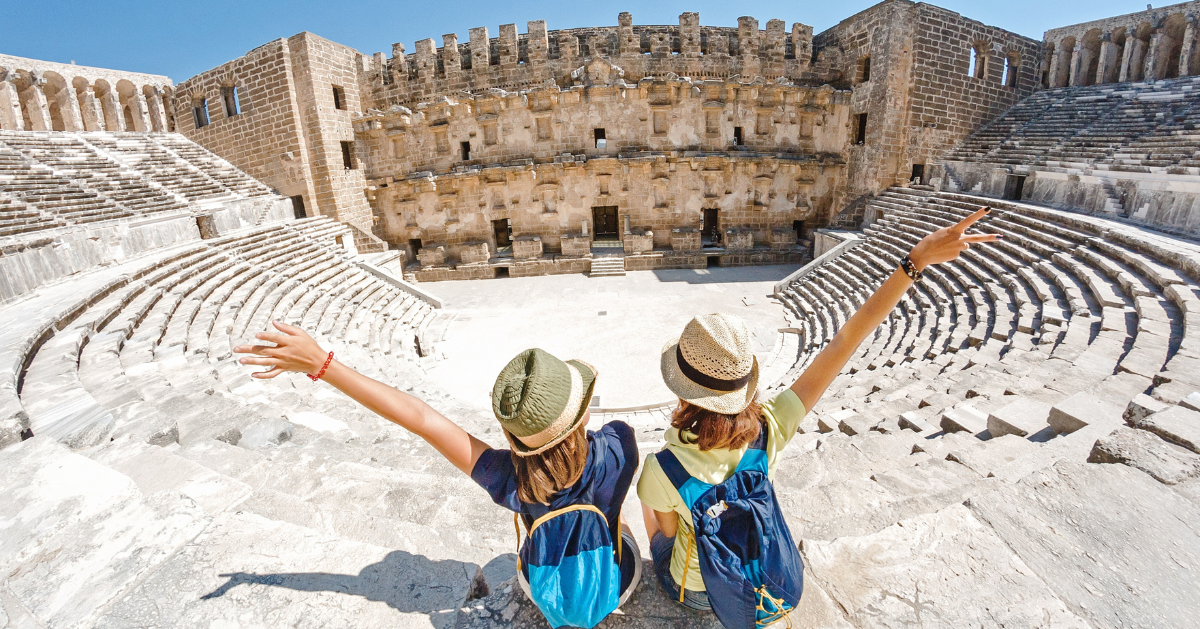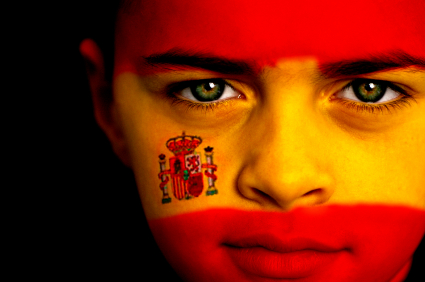
This series of 3 articles will introduce a taster of what the 17 autonomous regions of Spain have to offer visitors. This first part introduces with the wonderful regions of Andalucia, Aragon, Asturias, Balearic Islands and the Basque Country.
Andalucia
Andalucia is the largest region of Spain with a population of almost 8 million and 800km of coastline. The Costa del Sol is its most famous coastline and contains the popular tourist destinations of Marbella and Fuengirola. However, Andalucia is a beautiful region offering much more than simply a beach holiday for those wishing to travel al little further inland. Throughout the region you will find wonderful examples of the many Roman, Arabian and Moorish influences whose civilisations have made such a huge impact in Spain throughout her colourful history. The following 3 cities offer a great taster to this most wonderful and diverse region of Spain.
Seville
Seville is the regional capital and one of the most exciting cities in Europe offering many elegant boutiques, bars and restaurants, many to be found in the old quarter of Barrio Santa Cruz. Seville has many attractions including the Cathedral which contains the remains of Christopher Columbus and the Real Alcazar, a beautiful Moorish palace built in the 14th century.
Cordoba
Cordoba is a smaller city offering more of a Spanish atmosphere which can be felt within the many bars and restaurants throughout the city. Cordoba’s main attractions are the famous Alcazar Royal Palace with its fantastic Roman mosaics; the historic synagogue in its Jewish quarter and the world famous Mezquita Mosque with its superb forest of columns built around the year 600.
Granada
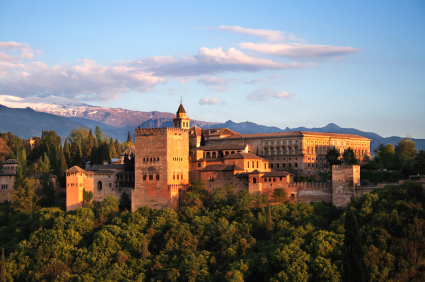
Granada is situated in the shadow of the great Sierra Nevada Mountains with its snow-capped peaks rising above the green foothills of the Alpujarras. The mysterious Alhambra Palace dominates Granada and is a must see for any visitors to the city. The Sierra Nevada offers some great skiing during the winter months between November and March offering great facilities and mountain views from its small surrounding villages.
Aragon
Aragon can be found in northeast Spain and comprises the provinces of Zaragoza, Huesca and Teruel. The official spoken language here is Castilian Spanish, however in some of the valleys of the Pyrenees can be heard the original language of Aragonese.
For those with a love of fishing, the river Ebro traverses the region and offers fish of such great numbers of cat fish and carp that the Ebro is considered one of the best locations in Europe for fishing. The Pyrenees Mountains to the north of the region offer wonderful dramatic scenery and beautiful secluded valleys which remain virtually unspoilt due to their inaccessibility.
Zaragoza
Zaragoza is the capital of Aragon and offers over 2000 years of history, originally being named after the Roman Emperor August. The huge Basilica de Nuestra Señora de Pilar dominates the city with its impressive domes and towers and this is where legend has it that the Virgin Mary appeared. La Aljaferia Palace can be found to the west of the city and is an Islamic-fortress and the residence of Arab kings, Christian kings, Aragonese kings and Spanish monarchs throughout its history.
Ordesa National Park
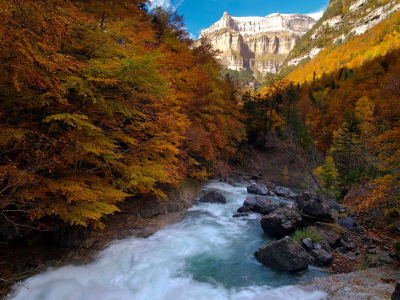
Declared a national park in 1918, Ordesa National Park is now protected in the Biosphere Reserve of Ordesa as declared by UNESCO. The park’s dramatic mountain scenery comprises of limestone cliffs, canyons, caves, chasms and crystal-clear streams which runs through forests of pine, birch, ash, willow and oak. It is a great place to go for birdwatchers where it is possible to see royal eagles, hawks, royal owls, ospreys and the snow partridge, while wildlife on the ground includes the marmot, wild boar, chamois and the red deer. The park is open all year round with the best conditions for walking and hiking being between April and October.
Asturias
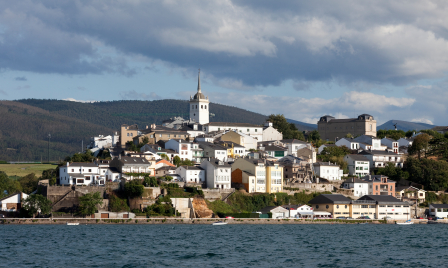
Asturias is situated on the north coast of Spain facing the Cantabrian Sea. Due to the regions wild and rugged terrain, Asturias never succumbed to the Moorish invasion, which virtually overran the whole of Spain in the 8th century. Their local hero Pelayo with his small army initiated the re-conquest of the region with a victory at the battle of Covadonga in 722. His remains have been interred in the Santa Cueva (Holy Cave) that is now a place of pilgrimage.
Oviedo
Oviedo is the capital of Asturias and even though many historical monuments have been destroyed in its long and sometimes violent history, some very early pre-Romanesque churches still survive here and within the surrounding area.
The Cathedral of San Salvador was erected in the late 14th century and displays a tall and elaborate Gothic tower which can be seen throughout the city. In the old part of Oviedo spread over three buildings can be found the Museum of Fine Arts. Here can be found paintings from the 19th and 20th century, along with many sculptures, photographs and drawings.
Costa Verde
Oviedo is just 25km from the Spanish north coast, the Costa Verde which is characterised by unspoilt sandy beaches hidden by rugged and dramatic cliffs along the length of its coastline. The weather here is more varied than southern regions of Spain with increased rainfall and cooler winters resulting in rolling hills of lush vegetation and grazing cattle.
Picos de Europa National Park
The Picos de Europa forms part of the Cantabrian mountain range and was the first National Park of this classification in Spain. Being almost entirely comprised of limestone their dramatic shape is mainly the result of glacial action from the retreat of the last ice age. The landscape is wonderfully diverse including huge summits with massive drops of over 2km. There are also lakes of crystal clear water; hillside forests of beech and oak groves and lush meadows with green pastures. For these reasons, they are a great destination for activity and outdoor holidays for walkers, climbers, trekkers and mountain climbers.
Balearic Islands
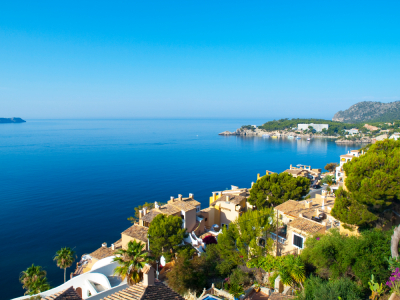
The Balearic Islands can be found in the Mediterranean Sea, just off the east coast of Spain. The four islands are Ibiza, Mallorca, Menorca and Formentera. Mallorca is also known as Majorca to the many thousands of holiday makers who visit the island each month. Mallorquin is the spoken language on the Balearics, although each island has their own dialect, of which they are fiercely proud. With an average of 300 sunshine days each year and fantastic beaches, it is easy to see why the islands are such a popular holiday destination, but there is more to the islands than just sun, sea and sand.
Ibiza
Ibiza is well known for its all-night party atmosphere, white sandy beaches and crystal blue waters of the Mediterranean Sea. With over 70 beaches, a wonderful countryside and great local cuisine from the many bars and restaurants to choose from, Ibiza is a popular, all-purpose holiday destination. Ibiza Town is the island’s capital and coastal harbour, offering cobbled streets with many fine restaurants and shops.
Mallorca
A popular holiday destination since the 1960s, the largest island in the Balearics has been the most affected by tourism. Along the coast much of the countryside has been replaced with hotel and apartment complexes, but there is still much of the beauty of Mallorca to be found. Palma de Majorca is the cosmopolitan city centre offering many holiday attractions including its Gothic Cathedral, The Castell de Bellver and its beautiful 17th Century Ayuntamiento (Town Hall).
Menorca
The second largest island in the Balearics, Menorca receives far fewer tourists than its larger sister, and as a result much of its natural beauty still remains. Menorca’s rugged coastline is perfectly suited for holidaymakers who wish to take advantage of the many idyllic beaches hidden within the small coves. Mahon is the capital of the island and has one of Europe’s largest natural harbours. The harbour offers a good selection of bars and shops, and also sea-front cafes and a lively nightlife.
Formentera
Without an airport of its own, Formentera receives all of its tourists either by boat or hydrofoil from Ibiza. There are tight governmental building restrictions preventing the number of hotels being built on this tiny island measuring just 30 square miles. As a result, the island has remained practically unspoilt making it perfect for those interested in sunbathing, windsurfing or scuba diving in the clear blue waters.
Basque Country
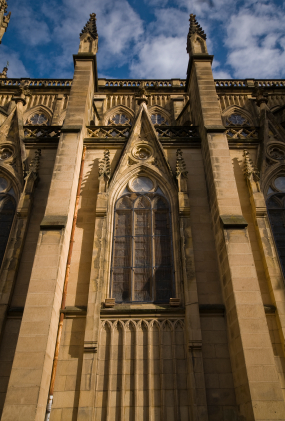
The Basque Country can be found in northern Spain bordering France. Its coastal road from Bilbao to San Sebastian offers some spectacular scenery including small fishing villages, coves and beach inlets overlooked with jagged and dramatic cliffs. The origins of their local language Euskadi cannot be traced, like that of the Basque race itself.
The small fishing villages of Lekeitio and Ondarroa both offer historical architecture including Gothic churches and the coastal town of Zarautz as well as having a 16th century Town Hall, Nuestra Senora de la Real church and Palacio Narros, also hosts the annual International Surfing Championship.
Bilbao
Bilbao is the largest city in the Basque Country and is the capital of Vizcaya province. The city is a major seaport and major developments and improvements within the city have helped to make it more of a tourist destination includes new parks, a metro system and at the heart of the renaissance, the Guggenheim Museum. Opened in 1997, the Guggenheim Museum is one of the most visited in Spain. Designed by Frank Gehry it is a masterpiece of modern architecture built out of titanium, glass and limestone. The huge windows of the central atrium help to bring natural light into the building, while standing outside is a surrealistic floral structure of a giant puppy.
San Sebastian
San Sebastian is the capital of Guipuzcoa province and has been a regularly visited by the Spanish aristocracy for hundreds of years due to its beauty and quality beaches. The city offers a unique atmosphere and distinguished cosmopolitan feel with a wonderful promenade lined with tamarind trees, Edwardian lampposts and beachfront cafes.
Vitoria
Vitoria is the capital of Alava province and offers a tremendous diverse amount of protected spaces. These include the Izki Nature Reserve with its melojo-oak forest and Gorbeia Nature Reserve, one of the Basque Country’s biggest natural tourist attractions. The city also has a huge number of green parks including Florida Park that was created in 1820 with its huge variety of plant species, and San Juan de Arriaga Park, which is the largest in the city.
That concludes Regions of Spain Part 1 – Andalucia to the Basque Country. In the second part I’ll be covering the Spanish regions Canary Islands to Extremadura and will let you know via our Facebook Page and Twitter Page as soon as it is available. We have a greal selection of Hostels in Spain, visit our Spanish page for booking information and local attractions.

This series of 3 articles will introduce a taster of what the 17 autonomous regions of Spain have to offer visitors. This first part introduces with the wonderful regions of Andalucia, Aragon, Asturias, Balearic Islands and the Basque Country.
Andalucia
Andalucia is the largest region of Spain with a population of almost 8 million and 800km of coastline. The Costa del Sol is its most famous coastline and contains the popular tourist destinations of Marbella and Fuengirola. However, Andalucia is a beautiful region offering much more than simply a beach holiday for those wishing to travel al little further inland. Throughout the region you will find wonderful examples of the many Roman, Arabian and Moorish influences whose civilisations have made such a huge impact in Spain throughout her colourful history. The following 3 cities offer a great taster to this most wonderful and diverse region of Spain.
Seville
Seville is the regional capital and one of the most exciting cities in Europe offering many elegant boutiques, bars and restaurants, many to be found in the old quarter of Barrio Santa Cruz. Seville has many attractions including the Cathedral which contains the remains of Christopher Columbus and the Real Alcazar, a beautiful Moorish palace built in the 14th century.
Cordoba
Cordoba is a smaller city offering more of a Spanish atmosphere which can be felt within the many bars and restaurants throughout the city. Cordoba’s main attractions are the famous Alcazar Royal Palace with its fantastic Roman mosaics; the historic synagogue in its Jewish quarter and the world famous Mezquita Mosque with its superb forest of columns built around the year 600.
Granada

Granada is situated in the shadow of the great Sierra Nevada Mountains with its snow-capped peaks rising above the green foothills of the Alpujarras. The mysterious Alhambra Palace dominates Granada and is a must see for any visitors to the city. The Sierra Nevada offers some great skiing during the winter months between November and March offering great facilities and mountain views from its small surrounding villages.
Aragon
Aragon can be found in northeast Spain and comprises the provinces of Zaragoza, Huesca and Teruel. The official spoken language here is Castilian Spanish, however in some of the valleys of the Pyrenees can be heard the original language of Aragonese.
For those with a love of fishing, the river Ebro traverses the region and offers fish of such great numbers of cat fish and carp that the Ebro is considered one of the best locations in Europe for fishing. The Pyrenees Mountains to the north of the region offer wonderful dramatic scenery and beautiful secluded valleys which remain virtually unspoilt due to their inaccessibility.
Zaragoza
Zaragoza is the capital of Aragon and offers over 2000 years of history, originally being named after the Roman Emperor August. The huge Basilica de Nuestra Señora de Pilar dominates the city with its impressive domes and towers and this is where legend has it that the Virgin Mary appeared. La Aljaferia Palace can be found to the west of the city and is an Islamic-fortress and the residence of Arab kings, Christian kings, Aragonese kings and Spanish monarchs throughout its history.
Ordesa National Park

Declared a national park in 1918, Ordesa National Park is now protected in the Biosphere Reserve of Ordesa as declared by UNESCO. The park’s dramatic mountain scenery comprises of limestone cliffs, canyons, caves, chasms and crystal-clear streams which runs through forests of pine, birch, ash, willow and oak. It is a great place to go for birdwatchers where it is possible to see royal eagles, hawks, royal owls, ospreys and the snow partridge, while wildlife on the ground includes the marmot, wild boar, chamois and the red deer. The park is open all year round with the best conditions for walking and hiking being between April and October.
Asturias

Asturias is situated on the north coast of Spain facing the Cantabrian Sea. Due to the regions wild and rugged terrain, Asturias never succumbed to the Moorish invasion, which virtually overran the whole of Spain in the 8th century. Their local hero Pelayo with his small army initiated the re-conquest of the region with a victory at the battle of Covadonga in 722. His remains have been interred in the Santa Cueva (Holy Cave) that is now a place of pilgrimage.
Oviedo
Oviedo is the capital of Asturias and even though many historical monuments have been destroyed in its long and sometimes violent history, some very early pre-Romanesque churches still survive here and within the surrounding area.
The Cathedral of San Salvador was erected in the late 14th century and displays a tall and elaborate Gothic tower which can be seen throughout the city. In the old part of Oviedo spread over three buildings can be found the Museum of Fine Arts. Here can be found paintings from the 19th and 20th century, along with many sculptures, photographs and drawings.
Costa Verde
Oviedo is just 25km from the Spanish north coast, the Costa Verde which is characterised by unspoilt sandy beaches hidden by rugged and dramatic cliffs along the length of its coastline. The weather here is more varied than southern regions of Spain with increased rainfall and cooler winters resulting in rolling hills of lush vegetation and grazing cattle.
Picos de Europa National Park
The Picos de Europa forms part of the Cantabrian mountain range and was the first National Park of this classification in Spain. Being almost entirely comprised of limestone their dramatic shape is mainly the result of glacial action from the retreat of the last ice age. The landscape is wonderfully diverse including huge summits with massive drops of over 2km. There are also lakes of crystal clear water; hillside forests of beech and oak groves and lush meadows with green pastures. For these reasons, they are a great destination for activity and outdoor holidays for walkers, climbers, trekkers and mountain climbers.
Balearic Islands

The Balearic Islands can be found in the Mediterranean Sea, just off the east coast of Spain. The four islands are Ibiza, Mallorca, Menorca and Formentera. Mallorca is also known as Majorca to the many thousands of holiday makers who visit the island each month. Mallorquin is the spoken language on the Balearics, although each island has their own dialect, of which they are fiercely proud. With an average of 300 sunshine days each year and fantastic beaches, it is easy to see why the islands are such a popular holiday destination, but there is more to the islands than just sun, sea and sand.
Ibiza
Ibiza is well known for its all-night party atmosphere, white sandy beaches and crystal blue waters of the Mediterranean Sea. With over 70 beaches, a wonderful countryside and great local cuisine from the many bars and restaurants to choose from, Ibiza is a popular, all-purpose holiday destination. Ibiza Town is the island’s capital and coastal harbour, offering cobbled streets with many fine restaurants and shops.
Mallorca
A popular holiday destination since the 1960s, the largest island in the Balearics has been the most affected by tourism. Along the coast much of the countryside has been replaced with hotel and apartment complexes, but there is still much of the beauty of Mallorca to be found. Palma de Majorca is the cosmopolitan city centre offering many holiday attractions including its Gothic Cathedral, The Castell de Bellver and its beautiful 17th Century Ayuntamiento (Town Hall).
Menorca
The second largest island in the Balearics, Menorca receives far fewer tourists than its larger sister, and as a result much of its natural beauty still remains. Menorca’s rugged coastline is perfectly suited for holidaymakers who wish to take advantage of the many idyllic beaches hidden within the small coves. Mahon is the capital of the island and has one of Europe’s largest natural harbours. The harbour offers a good selection of bars and shops, and also sea-front cafes and a lively nightlife.
Formentera
Without an airport of its own, Formentera receives all of its tourists either by boat or hydrofoil from Ibiza. There are tight governmental building restrictions preventing the number of hotels being built on this tiny island measuring just 30 square miles. As a result, the island has remained practically unspoilt making it perfect for those interested in sunbathing, windsurfing or scuba diving in the clear blue waters.
Basque Country

The Basque Country can be found in northern Spain bordering France. Its coastal road from Bilbao to San Sebastian offers some spectacular scenery including small fishing villages, coves and beach inlets overlooked with jagged and dramatic cliffs. The origins of their local language Euskadi cannot be traced, like that of the Basque race itself.
The small fishing villages of Lekeitio and Ondarroa both offer historical architecture including Gothic churches and the coastal town of Zarautz as well as having a 16th century Town Hall, Nuestra Senora de la Real church and Palacio Narros, also hosts the annual International Surfing Championship.
Bilbao
Bilbao is the largest city in the Basque Country and is the capital of Vizcaya province. The city is a major seaport and major developments and improvements within the city have helped to make it more of a tourist destination includes new parks, a metro system and at the heart of the renaissance, the Guggenheim Museum. Opened in 1997, the Guggenheim Museum is one of the most visited in Spain. Designed by Frank Gehry it is a masterpiece of modern architecture built out of titanium, glass and limestone. The huge windows of the central atrium help to bring natural light into the building, while standing outside is a surrealistic floral structure of a giant puppy.
San Sebastian
San Sebastian is the capital of Guipuzcoa province and has been a regularly visited by the Spanish aristocracy for hundreds of years due to its beauty and quality beaches. The city offers a unique atmosphere and distinguished cosmopolitan feel with a wonderful promenade lined with tamarind trees, Edwardian lampposts and beachfront cafes.
Vitoria
Vitoria is the capital of Alava province and offers a tremendous diverse amount of protected spaces. These include the Izki Nature Reserve with its melojo-oak forest and Gorbeia Nature Reserve, one of the Basque Country’s biggest natural tourist attractions. The city also has a huge number of green parks including Florida Park that was created in 1820 with its huge variety of plant species, and San Juan de Arriaga Park, which is the largest in the city.
That concludes Regions of Spain Part 1 – Andalucia to the Basque Country. In the second part I’ll be covering the Spanish regions Canary Islands to Extremadura and will let you know via our Facebook Page and Twitter Page as soon as it is available. We have a greal selection of Hostels in Spain, visit our Spanish page for booking information and local attractions.

This series of 3 articles will introduce a taster of what the 17 autonomous regions of Spain have to offer visitors. This first part introduces with the wonderful regions of Andalucia, Aragon, Asturias, Balearic Islands and the Basque Country.
Andalucia
Andalucia is the largest region of Spain with a population of almost 8 million and 800km of coastline. The Costa del Sol is its most famous coastline and contains the popular tourist destinations of Marbella and Fuengirola. However, Andalucia is a beautiful region offering much more than simply a beach holiday for those wishing to travel al little further inland. Throughout the region you will find wonderful examples of the many Roman, Arabian and Moorish influences whose civilisations have made such a huge impact in Spain throughout her colourful history. The following 3 cities offer a great taster to this most wonderful and diverse region of Spain.
Seville
Seville is the regional capital and one of the most exciting cities in Europe offering many elegant boutiques, bars and restaurants, many to be found in the old quarter of Barrio Santa Cruz. Seville has many attractions including the Cathedral which contains the remains of Christopher Columbus and the Real Alcazar, a beautiful Moorish palace built in the 14th century.
Cordoba
Cordoba is a smaller city offering more of a Spanish atmosphere which can be felt within the many bars and restaurants throughout the city. Cordoba’s main attractions are the famous Alcazar Royal Palace with its fantastic Roman mosaics; the historic synagogue in its Jewish quarter and the world famous Mezquita Mosque with its superb forest of columns built around the year 600.
Granada

Granada is situated in the shadow of the great Sierra Nevada Mountains with its snow-capped peaks rising above the green foothills of the Alpujarras. The mysterious Alhambra Palace dominates Granada and is a must see for any visitors to the city. The Sierra Nevada offers some great skiing during the winter months between November and March offering great facilities and mountain views from its small surrounding villages.
Aragon
Aragon can be found in northeast Spain and comprises the provinces of Zaragoza, Huesca and Teruel. The official spoken language here is Castilian Spanish, however in some of the valleys of the Pyrenees can be heard the original language of Aragonese.
For those with a love of fishing, the river Ebro traverses the region and offers fish of such great numbers of cat fish and carp that the Ebro is considered one of the best locations in Europe for fishing. The Pyrenees Mountains to the north of the region offer wonderful dramatic scenery and beautiful secluded valleys which remain virtually unspoilt due to their inaccessibility.
Zaragoza
Zaragoza is the capital of Aragon and offers over 2000 years of history, originally being named after the Roman Emperor August. The huge Basilica de Nuestra Señora de Pilar dominates the city with its impressive domes and towers and this is where legend has it that the Virgin Mary appeared. La Aljaferia Palace can be found to the west of the city and is an Islamic-fortress and the residence of Arab kings, Christian kings, Aragonese kings and Spanish monarchs throughout its history.
Ordesa National Park

Declared a national park in 1918, Ordesa National Park is now protected in the Biosphere Reserve of Ordesa as declared by UNESCO. The park’s dramatic mountain scenery comprises of limestone cliffs, canyons, caves, chasms and crystal-clear streams which runs through forests of pine, birch, ash, willow and oak. It is a great place to go for birdwatchers where it is possible to see royal eagles, hawks, royal owls, ospreys and the snow partridge, while wildlife on the ground includes the marmot, wild boar, chamois and the red deer. The park is open all year round with the best conditions for walking and hiking being between April and October.
Asturias

Asturias is situated on the north coast of Spain facing the Cantabrian Sea. Due to the regions wild and rugged terrain, Asturias never succumbed to the Moorish invasion, which virtually overran the whole of Spain in the 8th century. Their local hero Pelayo with his small army initiated the re-conquest of the region with a victory at the battle of Covadonga in 722. His remains have been interred in the Santa Cueva (Holy Cave) that is now a place of pilgrimage.
Oviedo
Oviedo is the capital of Asturias and even though many historical monuments have been destroyed in its long and sometimes violent history, some very early pre-Romanesque churches still survive here and within the surrounding area.
The Cathedral of San Salvador was erected in the late 14th century and displays a tall and elaborate Gothic tower which can be seen throughout the city. In the old part of Oviedo spread over three buildings can be found the Museum of Fine Arts. Here can be found paintings from the 19th and 20th century, along with many sculptures, photographs and drawings.
Costa Verde
Oviedo is just 25km from the Spanish north coast, the Costa Verde which is characterised by unspoilt sandy beaches hidden by rugged and dramatic cliffs along the length of its coastline. The weather here is more varied than southern regions of Spain with increased rainfall and cooler winters resulting in rolling hills of lush vegetation and grazing cattle.
Picos de Europa National Park
The Picos de Europa forms part of the Cantabrian mountain range and was the first National Park of this classification in Spain. Being almost entirely comprised of limestone their dramatic shape is mainly the result of glacial action from the retreat of the last ice age. The landscape is wonderfully diverse including huge summits with massive drops of over 2km. There are also lakes of crystal clear water; hillside forests of beech and oak groves and lush meadows with green pastures. For these reasons, they are a great destination for activity and outdoor holidays for walkers, climbers, trekkers and mountain climbers.
Balearic Islands

The Balearic Islands can be found in the Mediterranean Sea, just off the east coast of Spain. The four islands are Ibiza, Mallorca, Menorca and Formentera. Mallorca is also known as Majorca to the many thousands of holiday makers who visit the island each month. Mallorquin is the spoken language on the Balearics, although each island has their own dialect, of which they are fiercely proud. With an average of 300 sunshine days each year and fantastic beaches, it is easy to see why the islands are such a popular holiday destination, but there is more to the islands than just sun, sea and sand.
Ibiza
Ibiza is well known for its all-night party atmosphere, white sandy beaches and crystal blue waters of the Mediterranean Sea. With over 70 beaches, a wonderful countryside and great local cuisine from the many bars and restaurants to choose from, Ibiza is a popular, all-purpose holiday destination. Ibiza Town is the island’s capital and coastal harbour, offering cobbled streets with many fine restaurants and shops.
Mallorca
A popular holiday destination since the 1960s, the largest island in the Balearics has been the most affected by tourism. Along the coast much of the countryside has been replaced with hotel and apartment complexes, but there is still much of the beauty of Mallorca to be found. Palma de Majorca is the cosmopolitan city centre offering many holiday attractions including its Gothic Cathedral, The Castell de Bellver and its beautiful 17th Century Ayuntamiento (Town Hall).
Menorca
The second largest island in the Balearics, Menorca receives far fewer tourists than its larger sister, and as a result much of its natural beauty still remains. Menorca’s rugged coastline is perfectly suited for holidaymakers who wish to take advantage of the many idyllic beaches hidden within the small coves. Mahon is the capital of the island and has one of Europe’s largest natural harbours. The harbour offers a good selection of bars and shops, and also sea-front cafes and a lively nightlife.
Formentera
Without an airport of its own, Formentera receives all of its tourists either by boat or hydrofoil from Ibiza. There are tight governmental building restrictions preventing the number of hotels being built on this tiny island measuring just 30 square miles. As a result, the island has remained practically unspoilt making it perfect for those interested in sunbathing, windsurfing or scuba diving in the clear blue waters.
Basque Country

The Basque Country can be found in northern Spain bordering France. Its coastal road from Bilbao to San Sebastian offers some spectacular scenery including small fishing villages, coves and beach inlets overlooked with jagged and dramatic cliffs. The origins of their local language Euskadi cannot be traced, like that of the Basque race itself.
The small fishing villages of Lekeitio and Ondarroa both offer historical architecture including Gothic churches and the coastal town of Zarautz as well as having a 16th century Town Hall, Nuestra Senora de la Real church and Palacio Narros, also hosts the annual International Surfing Championship.
Bilbao
Bilbao is the largest city in the Basque Country and is the capital of Vizcaya province. The city is a major seaport and major developments and improvements within the city have helped to make it more of a tourist destination includes new parks, a metro system and at the heart of the renaissance, the Guggenheim Museum. Opened in 1997, the Guggenheim Museum is one of the most visited in Spain. Designed by Frank Gehry it is a masterpiece of modern architecture built out of titanium, glass and limestone. The huge windows of the central atrium help to bring natural light into the building, while standing outside is a surrealistic floral structure of a giant puppy.
San Sebastian
San Sebastian is the capital of Guipuzcoa province and has been a regularly visited by the Spanish aristocracy for hundreds of years due to its beauty and quality beaches. The city offers a unique atmosphere and distinguished cosmopolitan feel with a wonderful promenade lined with tamarind trees, Edwardian lampposts and beachfront cafes.
Vitoria
Vitoria is the capital of Alava province and offers a tremendous diverse amount of protected spaces. These include the Izki Nature Reserve with its melojo-oak forest and Gorbeia Nature Reserve, one of the Basque Country’s biggest natural tourist attractions. The city also has a huge number of green parks including Florida Park that was created in 1820 with its huge variety of plant species, and San Juan de Arriaga Park, which is the largest in the city.
That concludes Regions of Spain Part 1 – Andalucia to the Basque Country. In the second part I’ll be covering the Spanish regions Canary Islands to Extremadura and will let you know via our Facebook Page and Twitter Page as soon as it is available. We have a greal selection of Hostels in Spain, visit our Spanish page for booking information and local attractions.

This series of 3 articles will introduce a taster of what the 17 autonomous regions of Spain have to offer visitors. This first part introduces with the wonderful regions of Andalucia, Aragon, Asturias, Balearic Islands and the Basque Country.
Andalucia
Andalucia is the largest region of Spain with a population of almost 8 million and 800km of coastline. The Costa del Sol is its most famous coastline and contains the popular tourist destinations of Marbella and Fuengirola. However, Andalucia is a beautiful region offering much more than simply a beach holiday for those wishing to travel al little further inland. Throughout the region you will find wonderful examples of the many Roman, Arabian and Moorish influences whose civilisations have made such a huge impact in Spain throughout her colourful history. The following 3 cities offer a great taster to this most wonderful and diverse region of Spain.
Seville
Seville is the regional capital and one of the most exciting cities in Europe offering many elegant boutiques, bars and restaurants, many to be found in the old quarter of Barrio Santa Cruz. Seville has many attractions including the Cathedral which contains the remains of Christopher Columbus and the Real Alcazar, a beautiful Moorish palace built in the 14th century.
Cordoba
Cordoba is a smaller city offering more of a Spanish atmosphere which can be felt within the many bars and restaurants throughout the city. Cordoba’s main attractions are the famous Alcazar Royal Palace with its fantastic Roman mosaics; the historic synagogue in its Jewish quarter and the world famous Mezquita Mosque with its superb forest of columns built around the year 600.
Granada

Granada is situated in the shadow of the great Sierra Nevada Mountains with its snow-capped peaks rising above the green foothills of the Alpujarras. The mysterious Alhambra Palace dominates Granada and is a must see for any visitors to the city. The Sierra Nevada offers some great skiing during the winter months between November and March offering great facilities and mountain views from its small surrounding villages.
Aragon
Aragon can be found in northeast Spain and comprises the provinces of Zaragoza, Huesca and Teruel. The official spoken language here is Castilian Spanish, however in some of the valleys of the Pyrenees can be heard the original language of Aragonese.
For those with a love of fishing, the river Ebro traverses the region and offers fish of such great numbers of cat fish and carp that the Ebro is considered one of the best locations in Europe for fishing. The Pyrenees Mountains to the north of the region offer wonderful dramatic scenery and beautiful secluded valleys which remain virtually unspoilt due to their inaccessibility.
Zaragoza
Zaragoza is the capital of Aragon and offers over 2000 years of history, originally being named after the Roman Emperor August. The huge Basilica de Nuestra Señora de Pilar dominates the city with its impressive domes and towers and this is where legend has it that the Virgin Mary appeared. La Aljaferia Palace can be found to the west of the city and is an Islamic-fortress and the residence of Arab kings, Christian kings, Aragonese kings and Spanish monarchs throughout its history.
Ordesa National Park

Declared a national park in 1918, Ordesa National Park is now protected in the Biosphere Reserve of Ordesa as declared by UNESCO. The park’s dramatic mountain scenery comprises of limestone cliffs, canyons, caves, chasms and crystal-clear streams which runs through forests of pine, birch, ash, willow and oak. It is a great place to go for birdwatchers where it is possible to see royal eagles, hawks, royal owls, ospreys and the snow partridge, while wildlife on the ground includes the marmot, wild boar, chamois and the red deer. The park is open all year round with the best conditions for walking and hiking being between April and October.
Asturias

Asturias is situated on the north coast of Spain facing the Cantabrian Sea. Due to the regions wild and rugged terrain, Asturias never succumbed to the Moorish invasion, which virtually overran the whole of Spain in the 8th century. Their local hero Pelayo with his small army initiated the re-conquest of the region with a victory at the battle of Covadonga in 722. His remains have been interred in the Santa Cueva (Holy Cave) that is now a place of pilgrimage.
Oviedo
Oviedo is the capital of Asturias and even though many historical monuments have been destroyed in its long and sometimes violent history, some very early pre-Romanesque churches still survive here and within the surrounding area.
The Cathedral of San Salvador was erected in the late 14th century and displays a tall and elaborate Gothic tower which can be seen throughout the city. In the old part of Oviedo spread over three buildings can be found the Museum of Fine Arts. Here can be found paintings from the 19th and 20th century, along with many sculptures, photographs and drawings.
Costa Verde
Oviedo is just 25km from the Spanish north coast, the Costa Verde which is characterised by unspoilt sandy beaches hidden by rugged and dramatic cliffs along the length of its coastline. The weather here is more varied than southern regions of Spain with increased rainfall and cooler winters resulting in rolling hills of lush vegetation and grazing cattle.
Picos de Europa National Park
The Picos de Europa forms part of the Cantabrian mountain range and was the first National Park of this classification in Spain. Being almost entirely comprised of limestone their dramatic shape is mainly the result of glacial action from the retreat of the last ice age. The landscape is wonderfully diverse including huge summits with massive drops of over 2km. There are also lakes of crystal clear water; hillside forests of beech and oak groves and lush meadows with green pastures. For these reasons, they are a great destination for activity and outdoor holidays for walkers, climbers, trekkers and mountain climbers.
Balearic Islands

The Balearic Islands can be found in the Mediterranean Sea, just off the east coast of Spain. The four islands are Ibiza, Mallorca, Menorca and Formentera. Mallorca is also known as Majorca to the many thousands of holiday makers who visit the island each month. Mallorquin is the spoken language on the Balearics, although each island has their own dialect, of which they are fiercely proud. With an average of 300 sunshine days each year and fantastic beaches, it is easy to see why the islands are such a popular holiday destination, but there is more to the islands than just sun, sea and sand.
Ibiza
Ibiza is well known for its all-night party atmosphere, white sandy beaches and crystal blue waters of the Mediterranean Sea. With over 70 beaches, a wonderful countryside and great local cuisine from the many bars and restaurants to choose from, Ibiza is a popular, all-purpose holiday destination. Ibiza Town is the island’s capital and coastal harbour, offering cobbled streets with many fine restaurants and shops.
Mallorca
A popular holiday destination since the 1960s, the largest island in the Balearics has been the most affected by tourism. Along the coast much of the countryside has been replaced with hotel and apartment complexes, but there is still much of the beauty of Mallorca to be found. Palma de Majorca is the cosmopolitan city centre offering many holiday attractions including its Gothic Cathedral, The Castell de Bellver and its beautiful 17th Century Ayuntamiento (Town Hall).
Menorca
The second largest island in the Balearics, Menorca receives far fewer tourists than its larger sister, and as a result much of its natural beauty still remains. Menorca’s rugged coastline is perfectly suited for holidaymakers who wish to take advantage of the many idyllic beaches hidden within the small coves. Mahon is the capital of the island and has one of Europe’s largest natural harbours. The harbour offers a good selection of bars and shops, and also sea-front cafes and a lively nightlife.
Formentera
Without an airport of its own, Formentera receives all of its tourists either by boat or hydrofoil from Ibiza. There are tight governmental building restrictions preventing the number of hotels being built on this tiny island measuring just 30 square miles. As a result, the island has remained practically unspoilt making it perfect for those interested in sunbathing, windsurfing or scuba diving in the clear blue waters.
Basque Country

The Basque Country can be found in northern Spain bordering France. Its coastal road from Bilbao to San Sebastian offers some spectacular scenery including small fishing villages, coves and beach inlets overlooked with jagged and dramatic cliffs. The origins of their local language Euskadi cannot be traced, like that of the Basque race itself.
The small fishing villages of Lekeitio and Ondarroa both offer historical architecture including Gothic churches and the coastal town of Zarautz as well as having a 16th century Town Hall, Nuestra Senora de la Real church and Palacio Narros, also hosts the annual International Surfing Championship.
Bilbao
Bilbao is the largest city in the Basque Country and is the capital of Vizcaya province. The city is a major seaport and major developments and improvements within the city have helped to make it more of a tourist destination includes new parks, a metro system and at the heart of the renaissance, the Guggenheim Museum. Opened in 1997, the Guggenheim Museum is one of the most visited in Spain. Designed by Frank Gehry it is a masterpiece of modern architecture built out of titanium, glass and limestone. The huge windows of the central atrium help to bring natural light into the building, while standing outside is a surrealistic floral structure of a giant puppy.
San Sebastian
San Sebastian is the capital of Guipuzcoa province and has been a regularly visited by the Spanish aristocracy for hundreds of years due to its beauty and quality beaches. The city offers a unique atmosphere and distinguished cosmopolitan feel with a wonderful promenade lined with tamarind trees, Edwardian lampposts and beachfront cafes.
Vitoria
Vitoria is the capital of Alava province and offers a tremendous diverse amount of protected spaces. These include the Izki Nature Reserve with its melojo-oak forest and Gorbeia Nature Reserve, one of the Basque Country’s biggest natural tourist attractions. The city also has a huge number of green parks including Florida Park that was created in 1820 with its huge variety of plant species, and San Juan de Arriaga Park, which is the largest in the city.
That concludes Regions of Spain Part 1 – Andalucia to the Basque Country. In the second part I’ll be covering the Spanish regions Canary Islands to Extremadura and will let you know via our Facebook Page and Twitter Page as soon as it is available. We have a greal selection of Hostels in Spain, visit our Spanish page for booking information and local attractions.
